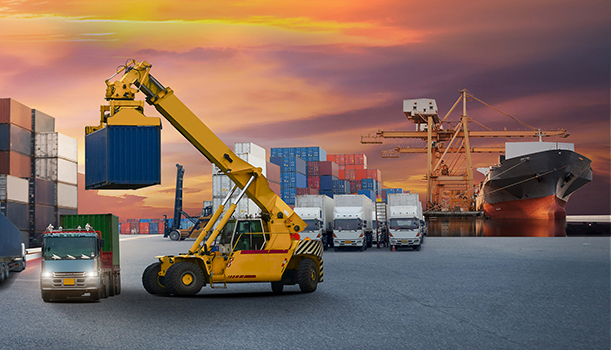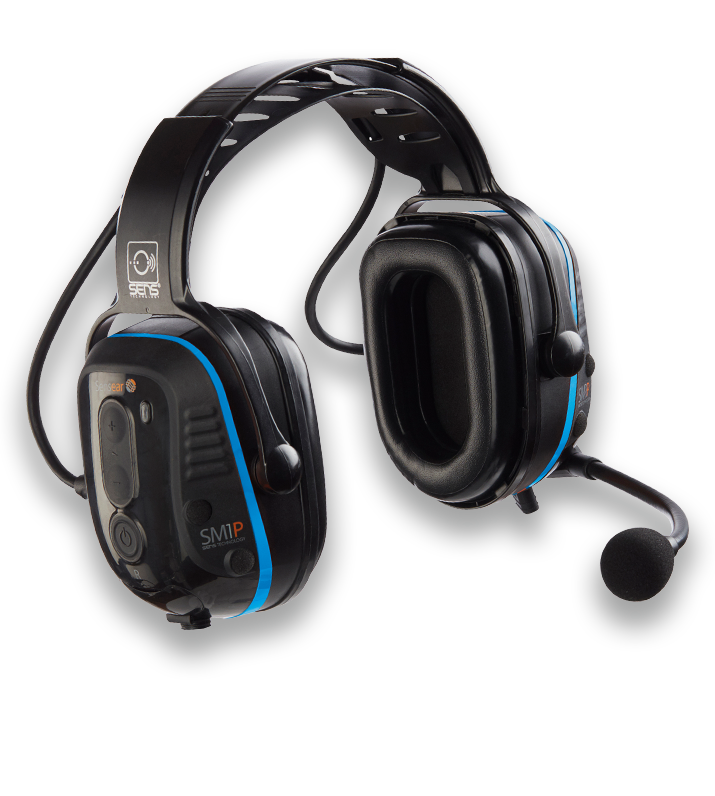Hearing Protection and Communications Solutions for Container and Shipping Industry
More than 80-90% of international goods traded are carried by sea—intermodal container shipping and freight transportation has grown significantly across the world in recent years, resulting in the creation of more and larger ports—and more sources of noise pollution.
High-noise emissions put employees at risk both on-board ships—in engine rooms, control rooms, and around generators and cranes—and across shipping and container yards. In both cases, employees can frequently be exposed to a time-weighted noise average of 85 dBA or more during a typical 8-hour workday.
Every year, between 80-90% of commodities in global trade are carried by ships.
Worldwide, the international commercial fleet numbers over 100,000 ships.

Employees working in a shipping or container yard are exposed to high noise when working around ships in transit or stationary ships, as well as offshore cargo handling, such as container handlers, reach stackers, straddle carriers, cranes, and auxiliary equipment. Even loudspeakers are regular and unpredictable noise sources in a shipping or container yard—potentially resulting in serious hearing loss for anyone nearby.
However, because hearing loss is more gradual and not as noticeable as a slip, trip, or fall, it is less recognized than other injuries. Like many occupational injuries, work-related hearing loss is preventable when controls are implemented, proper protection is provided, and required standards are followed.
Multiple hazards exist for shipping-related workers on the job. Unfortunately, noise and hearing loss are not considered as being as critical as other more prevalent dangers. Because hearing loss is more gradual and not typically immediately noticeable, it is not as recognized as other injuries.
Hearing damage is preventable, but it cannot be undone. There is no surgery or cure for noise-induced hearing loss. Repeated exposure to high noise levels, such as working near off-loading and stacking equipment, straddle carriers, cranes, and moving vehicles, can lead to permanent hearing loss or tinnitus.
Sensear is Solving High-Noise Communication Problems in the Container and Shipping Industry
The U.S. Occupational Health and Safety Administration (OSHA) requires industry employers to provide hearing protection to their employees when noise exposure equals or exceeds an 8-hour time-weighted average (TWA) of 85 dB(A) or more.
There are a variety of different activities within shipping and container yards that can create significant and harmful noise levels, particularly with long-term exposure. That is why providing workers with Sensear’s noise-canceling headsets is critical to mitigating the serious risk of hearing loss.
Find the Best Shipping Headsets for Hearing Protection and Communication
To get the best solution for communication, speech enhancement, and noise suppression for ships and ports, schedule a free consultation today, and we’ll help you find the ideal hearing protection solution for your location.
Container & Shipping Blogs
Support Documents
Sensear in Action:
In Shipping Industry
Safely and effectively communicating on container and shipping sites with noise levels in excess of 102dB was impossible. Now with Senear's innovative SENS (speech enhancement, noise suppression) technology, they are able to hear speech and stay protected.



-Jun-27-2023-02-53-41-2583-PM.png?width=350&height=351&name=SM1R%20(350x351)-Jun-27-2023-02-53-41-2583-PM.png)
-4.png?width=350&height=351&name=SM1P%20(350x351)-4.png)

.png?width=350&height=351&name=smartPlug%2002%20(350x351).png)
